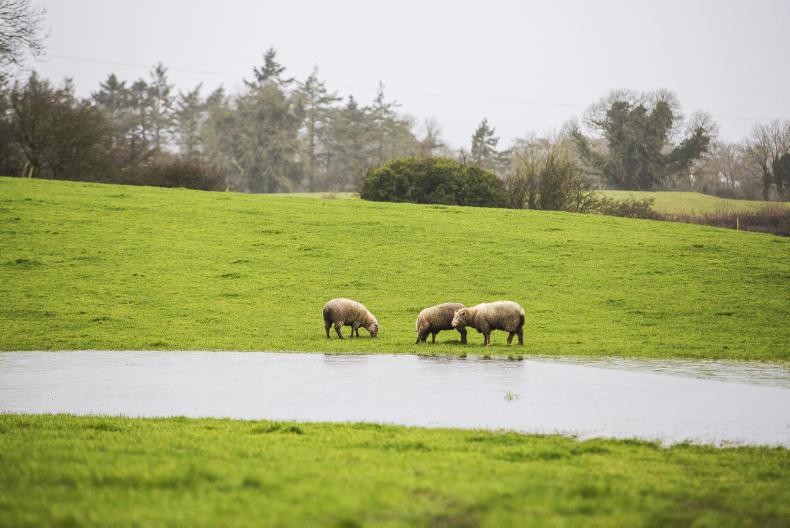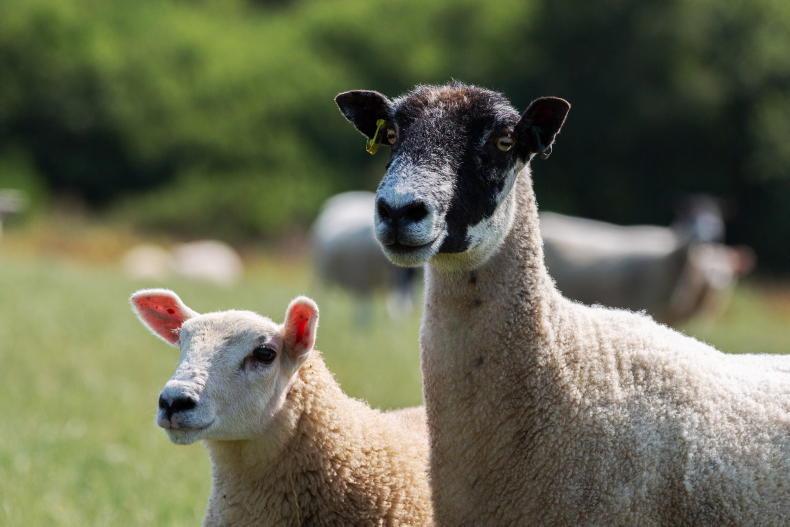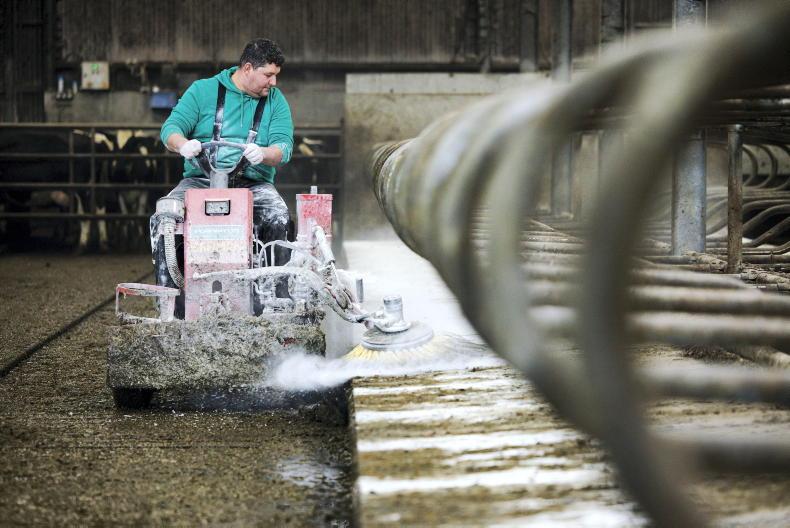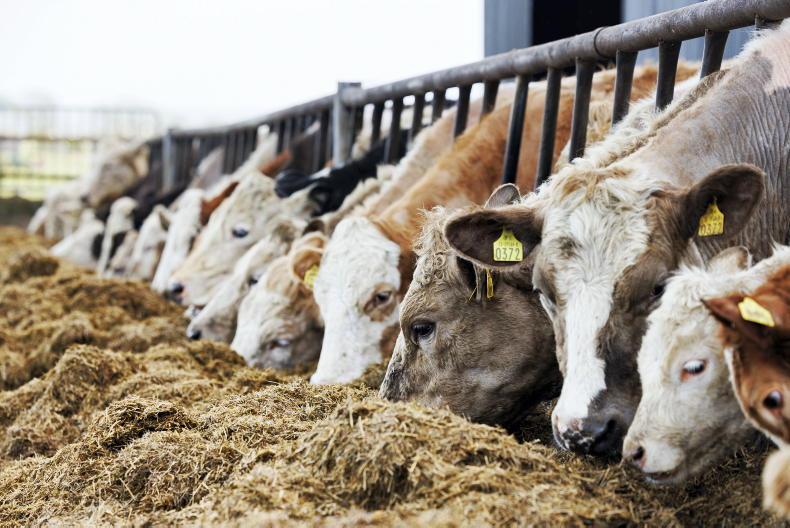Weather challenges: This week’s torrential rain has compounded a difficult few weeks in many parts of the country. Grass supplies are positive in the main but there is a big variation in ground conditions, with some farms facing significant challenges in terms of utilising grass and keeping lambs performing.
Keeping good-quality grass ahead of lambs is easier said than done in such conditions but where this is not achieved then lamb performance will suffer greatly. Lamb intakes will drop significantly where grazing on wet underfoot conditions and swards become soiled irrespective of how much grass is available.
The best approach in such cases in the coming days is to try to keep lambs moving to fresh grass if feasible along with targeting the driest areas to graze now. The turnaround time to grazing these fields that lambs have been moved from will be quick while utilisation will benefit from a rest period and a chance for ground to dry out.
Some factories had been reporting an increase in the number of lambs falling into fat class 2 and this weather will increase the risk of lambs failing to achieve the required fat cover. Most issues are being reported in ram lambs, which is to be expected. There will be little choice if ground conditions do not recover quickly but to introduce concentrates to underpin performance and hit fat cover targets.
The best response will be achieved by segregating lambs and offering concentrates to forward lambs for a shorter period An allocation of 0.5kg should be sufficient where grass supplies and quality is good but higher levels may be warranted where there is a concern about performance from grass. Some farmers will build well-grown ram lambs up to 0.8kg to 1kg meals once accustomed to feeding for a three- to four-week period and use this to fast-track drafting. The concentrate offered does not need to be a fancy formulation – a standard high-energy cereal-based ration will be more than sufficient.
Autumn grass supplies: The lower levels of utilisation will also see sheep moving much quicker through grass supplies. Many farms have also skipped a round of fertiliser given the strong growth rates of late and this will reduce sward recovery times and hit growth rates in the coming weeks. Therefore, it is important that fertiliser is applied once ground conditions allow.
Highly stocked farms (10 ewes plus/ha) are generally applying in the region of 25 to 30 units of nitrogen in the last application while lowly stocked farms will benefit from applying 10 to 15 units of nitrogen. There will also be a benefit in applying a compound fertiliser on soils that are low in P and K and where there is likely to have been a greater offtake in swards cut for silage or hay.
On farms that will struggle to finish lambs and build autumn grass supplies for ewes, early intervention will be required to put a workable plan in place.
The store lamb trade is solid and will likely remain like this in at least the short term given the high level of demand. It is advisable to go through your lambs and categorise the type of lambs on hand. For some it will make more sense to move light store lambs that they may struggle to finish and end up competing with ewes for grass.
Weather challenges: This week’s torrential rain has compounded a difficult few weeks in many parts of the country. Grass supplies are positive in the main but there is a big variation in ground conditions, with some farms facing significant challenges in terms of utilising grass and keeping lambs performing.
Keeping good-quality grass ahead of lambs is easier said than done in such conditions but where this is not achieved then lamb performance will suffer greatly. Lamb intakes will drop significantly where grazing on wet underfoot conditions and swards become soiled irrespective of how much grass is available.
The best approach in such cases in the coming days is to try to keep lambs moving to fresh grass if feasible along with targeting the driest areas to graze now. The turnaround time to grazing these fields that lambs have been moved from will be quick while utilisation will benefit from a rest period and a chance for ground to dry out.
Some factories had been reporting an increase in the number of lambs falling into fat class 2 and this weather will increase the risk of lambs failing to achieve the required fat cover. Most issues are being reported in ram lambs, which is to be expected. There will be little choice if ground conditions do not recover quickly but to introduce concentrates to underpin performance and hit fat cover targets.
The best response will be achieved by segregating lambs and offering concentrates to forward lambs for a shorter period An allocation of 0.5kg should be sufficient where grass supplies and quality is good but higher levels may be warranted where there is a concern about performance from grass. Some farmers will build well-grown ram lambs up to 0.8kg to 1kg meals once accustomed to feeding for a three- to four-week period and use this to fast-track drafting. The concentrate offered does not need to be a fancy formulation – a standard high-energy cereal-based ration will be more than sufficient.
Autumn grass supplies: The lower levels of utilisation will also see sheep moving much quicker through grass supplies. Many farms have also skipped a round of fertiliser given the strong growth rates of late and this will reduce sward recovery times and hit growth rates in the coming weeks. Therefore, it is important that fertiliser is applied once ground conditions allow.
Highly stocked farms (10 ewes plus/ha) are generally applying in the region of 25 to 30 units of nitrogen in the last application while lowly stocked farms will benefit from applying 10 to 15 units of nitrogen. There will also be a benefit in applying a compound fertiliser on soils that are low in P and K and where there is likely to have been a greater offtake in swards cut for silage or hay.
On farms that will struggle to finish lambs and build autumn grass supplies for ewes, early intervention will be required to put a workable plan in place.
The store lamb trade is solid and will likely remain like this in at least the short term given the high level of demand. It is advisable to go through your lambs and categorise the type of lambs on hand. For some it will make more sense to move light store lambs that they may struggle to finish and end up competing with ewes for grass.










SHARING OPTIONS